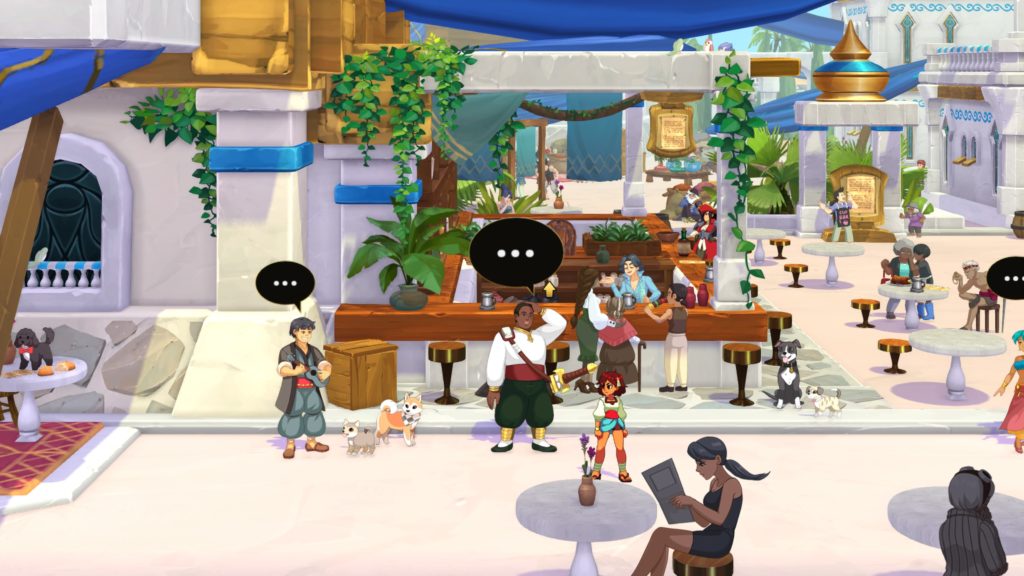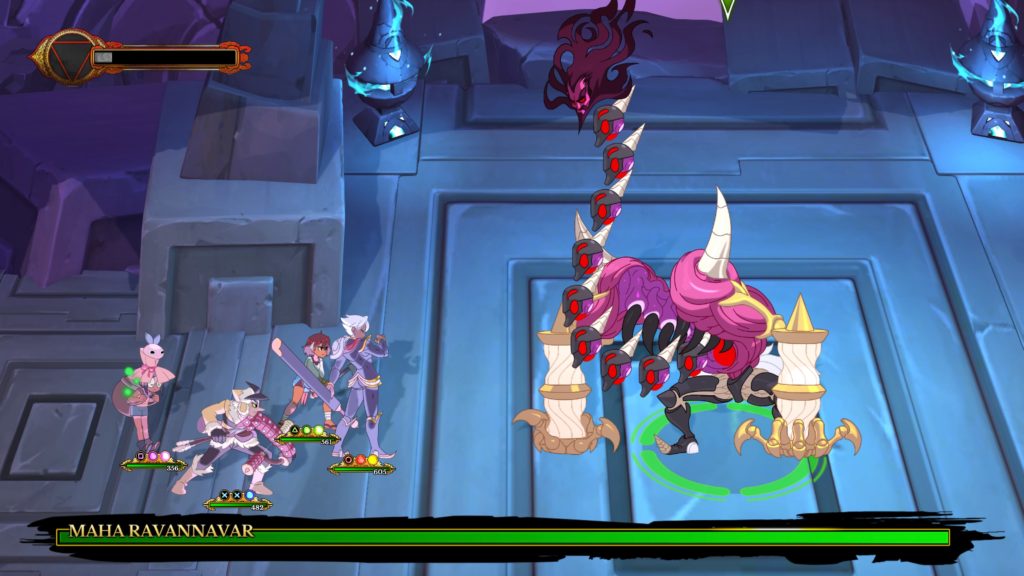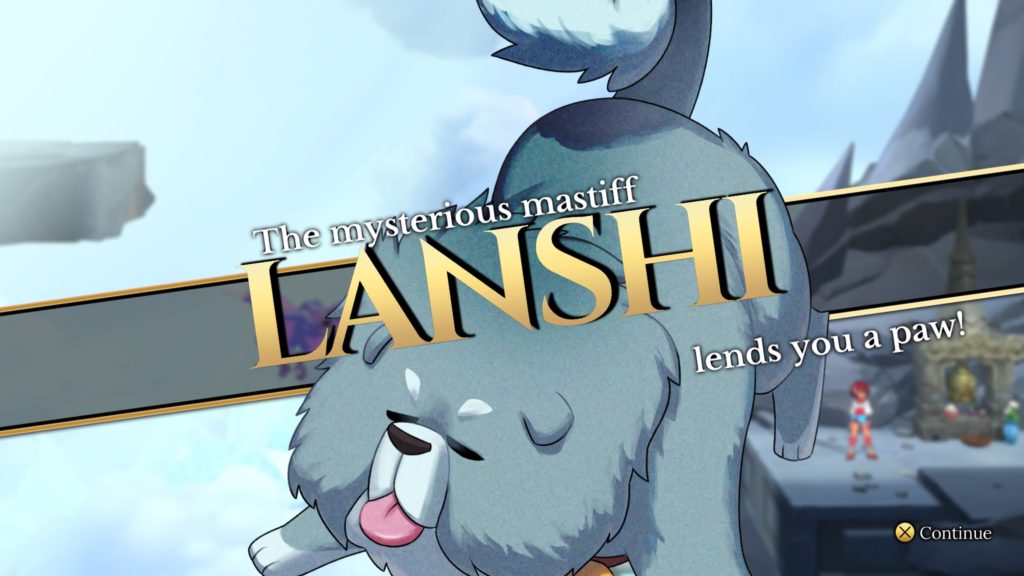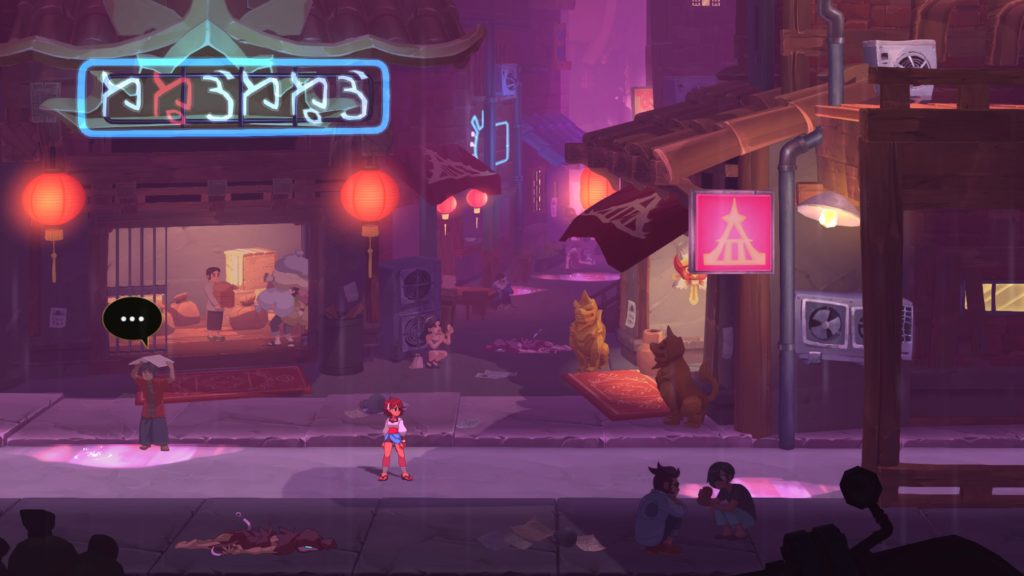- Genre: Action RPG
- Platform: PS4
- Also Available On: Xbox One, Windows, macOS, Linux, Switch
I’m glad that this game was a milestone number for my ramblings, because it’s the kind of game I really live for. It’s both instantly recognizeable, but completely unique. It’s kind of an ARPG, kind of a JRPG, kind of a Metroidvania, but really it’s none of those things alone and all of those things together. It takes a bunch of pieces that shouldn’t work together, mashes them together, and spits something out that is phenomenal.

The first thing that really stood out was that the game was flat out gorgeous, though that isn’t much of a surprise. This is the team behind Skullgirls, which gameplay aside, was always known for its visual style. Right from the start, it’s a great mix of 3D backgrounds and 2D character art that pops like very few games do. Particularly in battle, the animation is all ridiculously well crafted hand-drawn art that really brings a bright and fun visual style to life. Amidst the chaos of battle, it’s all a joy to watch.

However, it’s that battle that really pulls you into the game. This is a bizarre mix of two RPG subgenres that somehow mash together. On the one hand, the battle system is very much an almost ATB-style system, where the characters charge up attack slots at different speeds up to a cap. However, those attack slots are not your typical menu slots – they’re instead button presses tied to each character, which can be comboed with directional inputs to do any sort of mix of functionality. This is expanded by different characters having different capabilities to really bring a simple but extremely deep combat system to life. It’s not unlike Valkyrie Profile in a lot of ways, but it definitely feels very much its own.
For example, Ajna can break enemies that are shielding with an up+down combo. I used a healer named Ginseng that built up power with straight attacks, then activated a power scaled group heal with their up attack. For flying enemies, I had an archer named Zebei that could shoot enemies out of the sky to be attacked by the rest of the party. At one point I even had a dog named Lanshi whose sole fight pattern was to bark at the enemy party, dealing large AoE damage. This is backed by a charged special attack bar that the entire party could use to do significantly large and flashy attacks to all enemies, like the one below.
I think I just turned Super Saiyan? pic.twitter.com/8sMKHjBknO
— Dan Weiss (@schenksmill) December 26, 2019
On the defensive side, it’s all timing based. Correctly timing a button press when being attacked can block incoming damage, starting with partial block and growing all the way to character heals by the end of the game. This ability to block damage means that missing the button press is absolutely hazardous, as the game is scaled around the player preventing incoming damage as much as possible. A good player will basically never take damage, while a lesser player will likely need to grind a bit to become stronger, so this also works as a pretty solid built-in difficulty mechanic to allow better players to simply move forward.

In general, this battle system was just straight up fun. I spent a decent amount of time when grabbing new characters playing around to see how they felt, but over time settled on a party that really fit my preferred style. For me it was all about fast charging characters with good single target attacks, backed by Ginseng’s healing capabilities, and very little defense other than good timing. It fit a really fun sort of zerg rush pattern that I leaned hard into by the end of the game.
The Metroidvania aspect of the game is generally the weaker part of this mash of genres. It’s not that it’s implemented poorly – the levels all have a ton of side paths that are slowly unlocked as the player gains new abilities. It’s that the level layouts don’t really feel tuned to Metroidvania-style retraversal. It was pretty much without fail that I’d start on one end of a region map, get all the way to the far other side of the region map, and hit a story block with no new power helpful to the current region, requiring me to go completely back across the map to get to a ship and move to a different region. More often than not, the new paths opened with new abilities were typically smaller side paths that existed to collect upgrades, and not necessarily new paths for traversing the level in a different fashion. By doing this extreme side to side layout design, it really ended up making me retraverse the levels with nothing new to do, rather than the more Metroid-typical pattern of earning powers often, and traversing a region with full new paths. Things opened up a bit more by the end of the game, but by that point it kind of felt like too little too late.

That being said, the traversal not being great didn’t minimize my enjoyment of the game. This was ultimately one of my rare PS4 platinums, clocking in at a bit under 20 hours to get the full trophy set. Within that, I got to experience a bunch of great combat, some fantastically flashy and memorable bosses, and more than a few laughs at the party’s expense. For me this is even better, as I was a backer of their Indiegogo campaign, so watching this one come to life, and having it live up to my hopes is something that I’m always wishing for. At this point, it’s been a long time since we’ve seen a proper non-mobile Valkyrie series entry out of Square, and if Indivisible is the way that someone runs with the gameplay, I’m certainly excited about the end result.
